You’ve come to the right place if you’re looking for ways to spruce up your coffee table. You’re about to see 15 amazing coffee table plants in this article.
No doubt, a plant is the best centerpiece for your coffee table. In addition to looking pretty, they’re good for indoor air quality and stress reduction.
The plants I’ve chosen are small, so they don’t take up much space on your coffee table. They are also low-maintenance plants, so they will thrive on your table with little care.
Having said that, before I show you the best coffee table plants, let’s first understand how to choose them.
How to Pick the Right Plants for Your Coffee Table
Ask the following questions before purchasing plants for your coffee table.
Does it appear to be in good condition?
Is the plant free of debris and clean?
What about its stems?
Are they turgid?
Has the plant you’re admiring developed any new leaves or buds?
Also, when selecting the ideal plants for your coffee table, think about the following:
Size of the Plant
one of the important factors while selecting the best plants for coffee tables. Bear in mind that your plant will grow in size. Because of this, choose a plant with a very slow growth rate or else you can choose a small plant.
Lighting in Your Home
Choose plants that will thrive in the amount of light your house receives. Be aware that the amount of light your plant receives will vary depending on where it is placed—in this case, on your coffee table.
Best Coffee Table Plants
1. Jade Plant
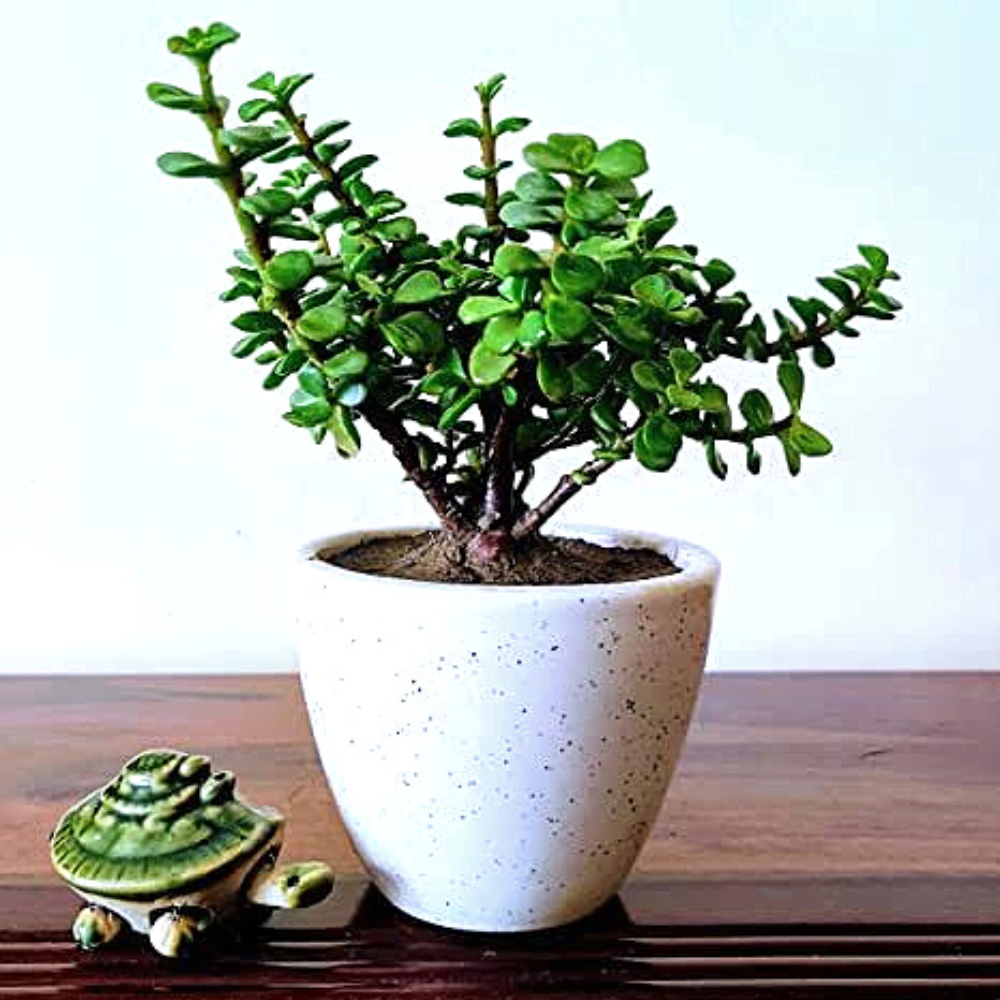
A jade plant makes the ideal coffee table centerpiece. You may grow it indoors with a little care, indirect light, and sporadic watering. This succulent, which is sometimes called a money tree, has a lot of advantages.
2. Succulents

Succulents are known to grow in dry soil for an extended period of time. They live in low light and thrive in neglect. You can also grow them in unusual containers. They come in a broad range. some of the best succulents are aloe vera, Echeveria, and jade.
3. Cacti
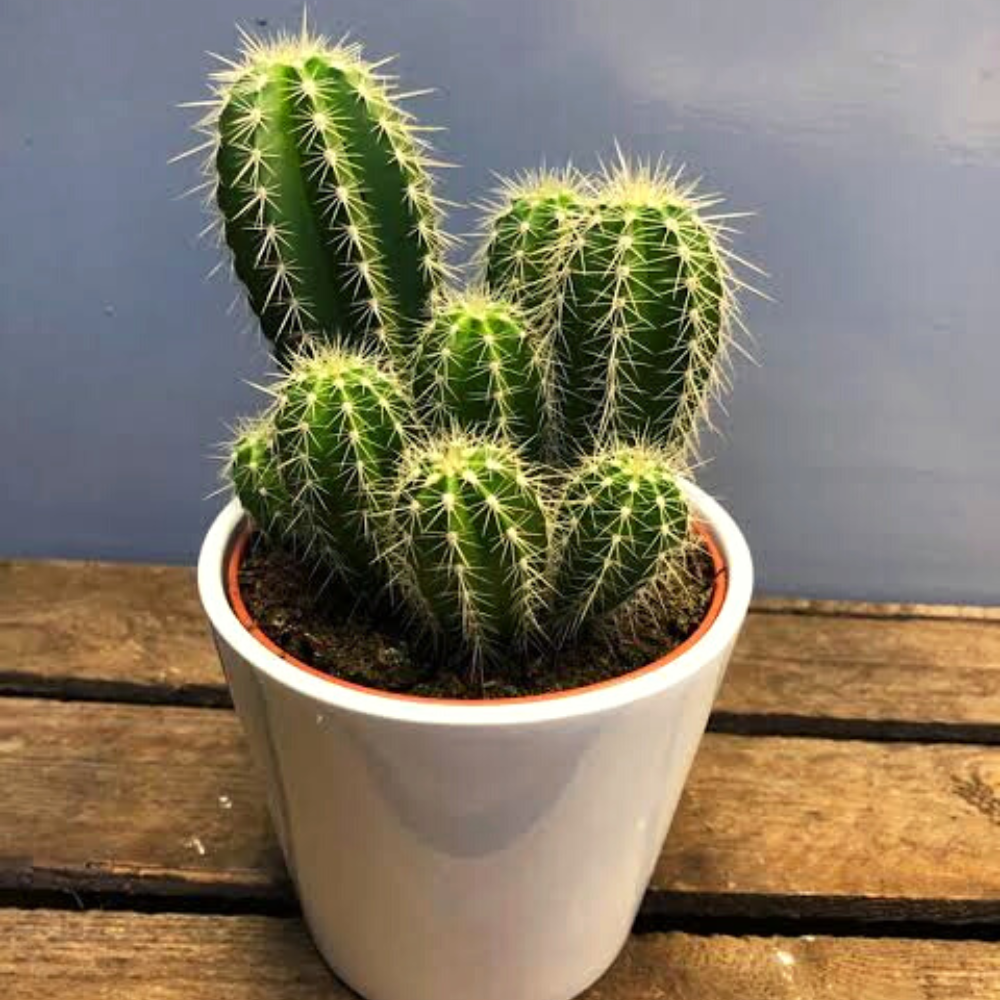
Cactus plants require little care, just like succulents do. Some of them feature flowers, and others, like moonlight cactus, are vibrant and allow you to decorate the table with a splash of color and elegance.
4. Air Plants
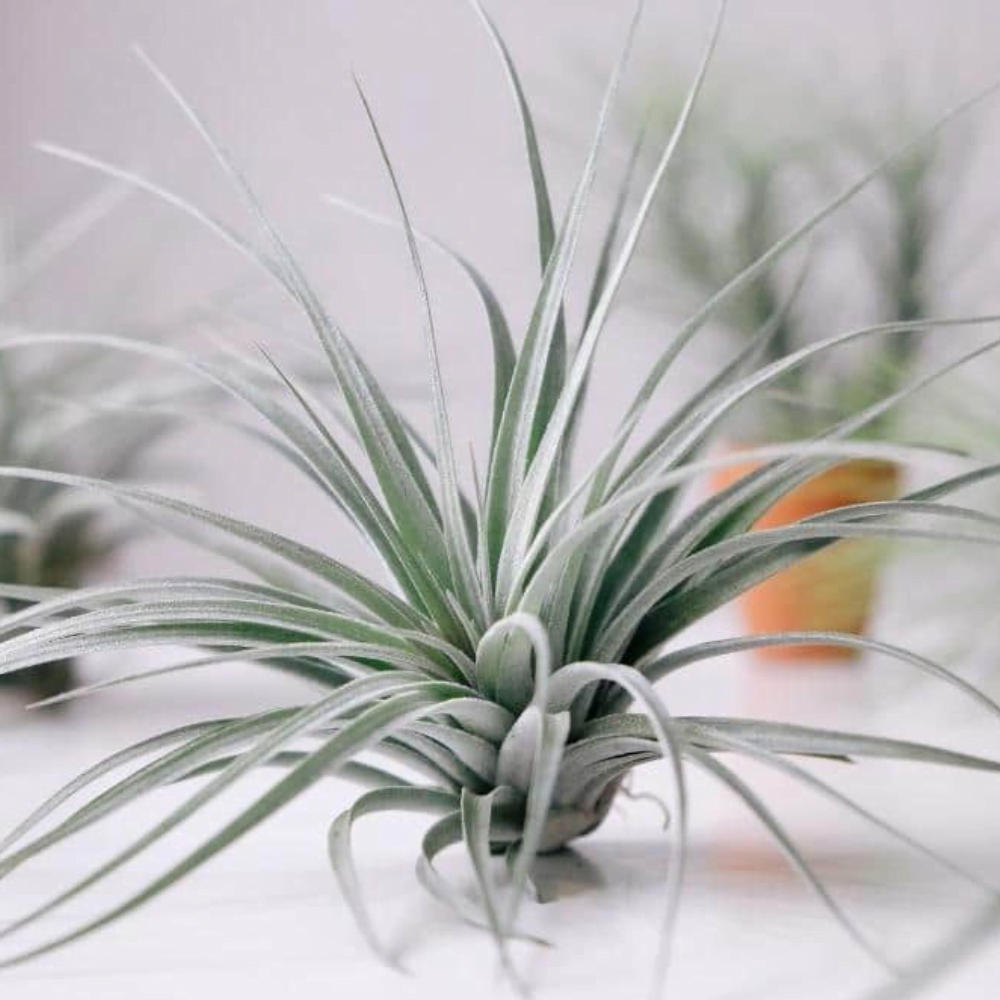
Since air plants don’t require soil to grow, they’ll be a tidy addition to your coffee table. They will look nice mounted on artistic holders like wood blocks, spring stands, toys, and terrariums.
5. Blushing Bromeliad

Before flowering, this bromeliad turns red from the center. For this reason, it is also known as the blushing bromeliad. It prefers a south or west-facing area indoors with some sunlight.
6. Snake Plant
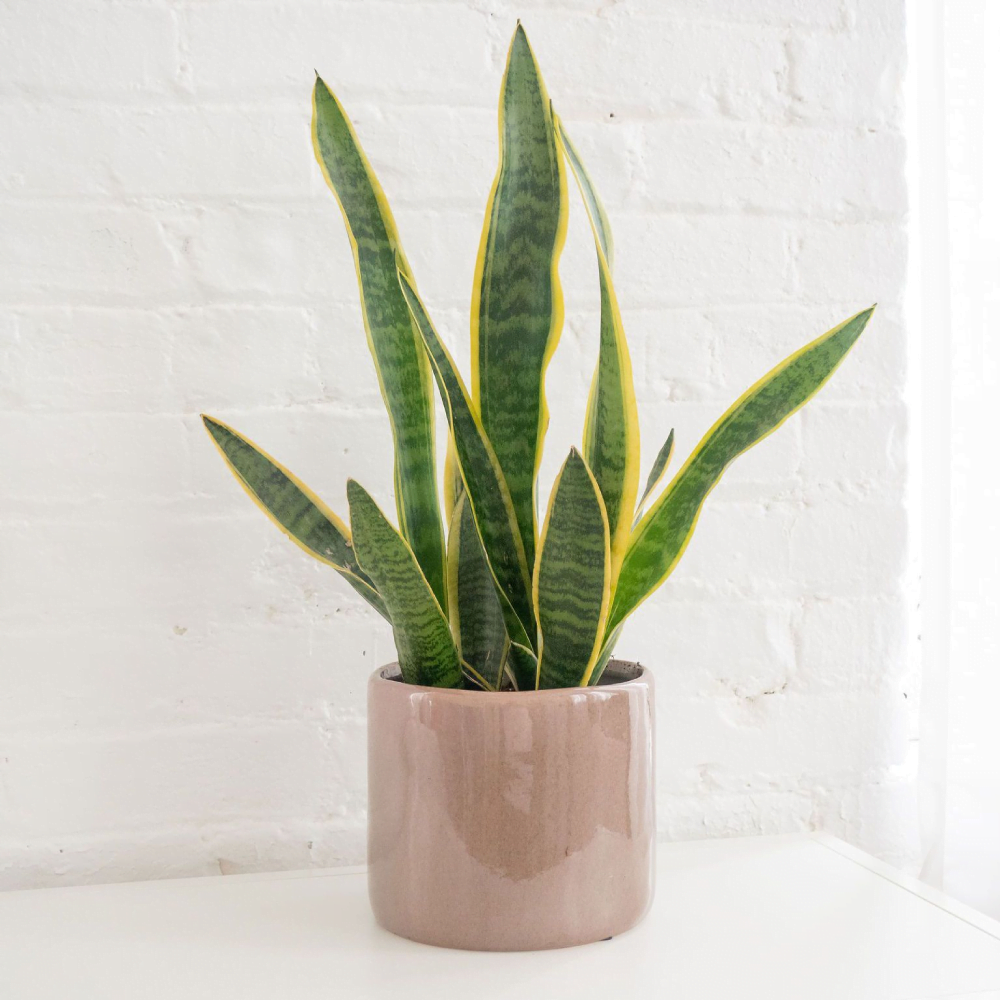
Your coffee table will look nice with the snake plant’s distinctive upright foliage that resembles a sword. Select dwarf Sansevieria cultivars for a tiny coffee table.
7. Cape Primrose
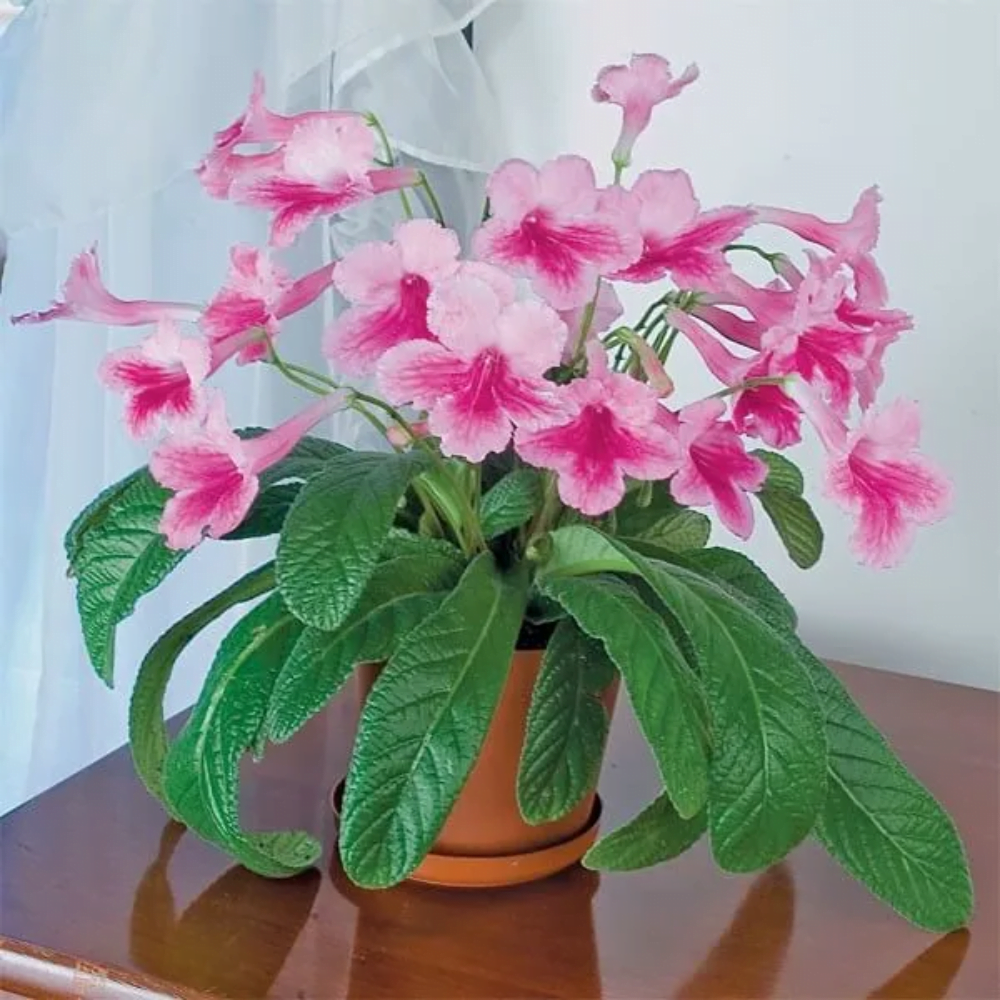
An uninteresting coffee table can be instantly perked up with a cape primosa. This relative of the African violet boasts vibrant flowers and delicate, velvety leaves. To keep it developing, give it morning sunlight as well as brilliant indirect light all day long.
8. Boston fern

The Boston fern is the ideal plant to add some natural beauty to your coffee table. It enjoys being watered frequently indoors, where it thrives. To further improve its appeal, pick a decorative pot and scatter pebbles over the topsoil.
9. Grape Hyacinth
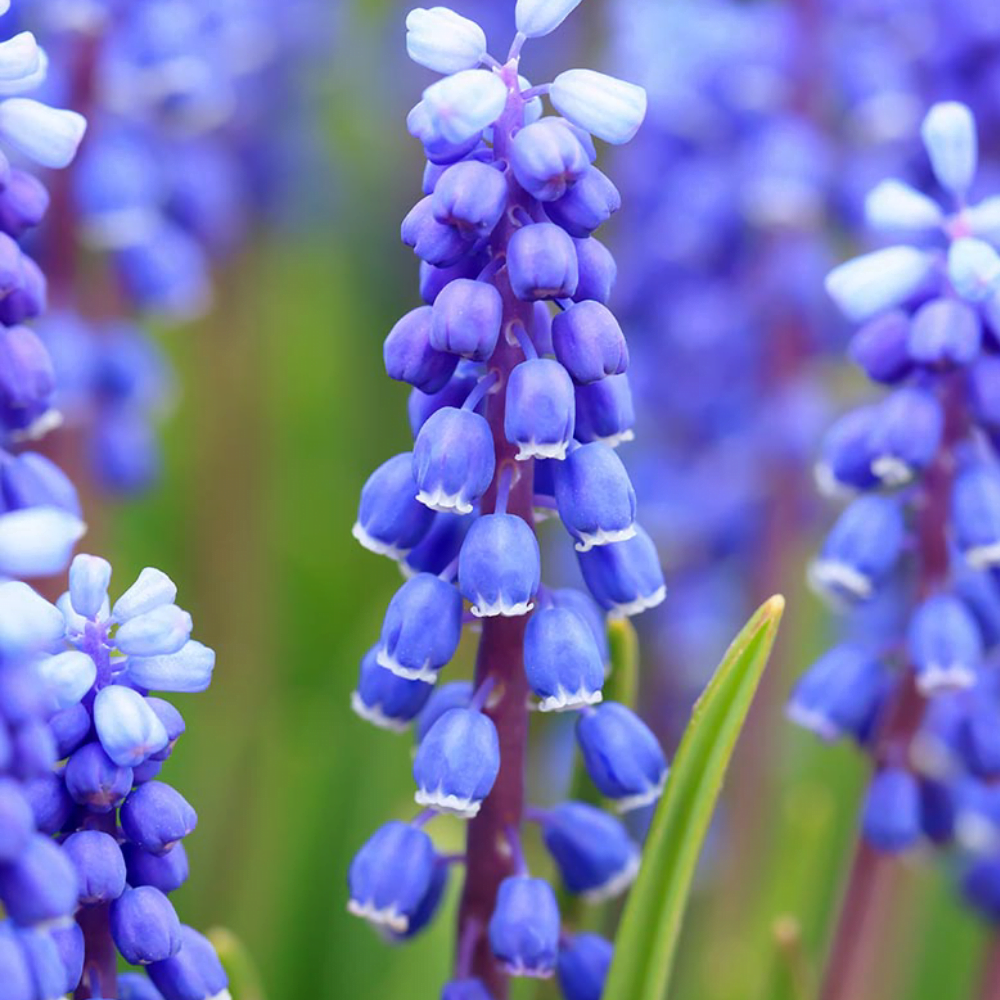
The grape hyacinth is a stunning plant that brightens any tabletop with its bunches of blue blossoms. They thrive under bright sunlight and moderate irrigation.
10. African Violet
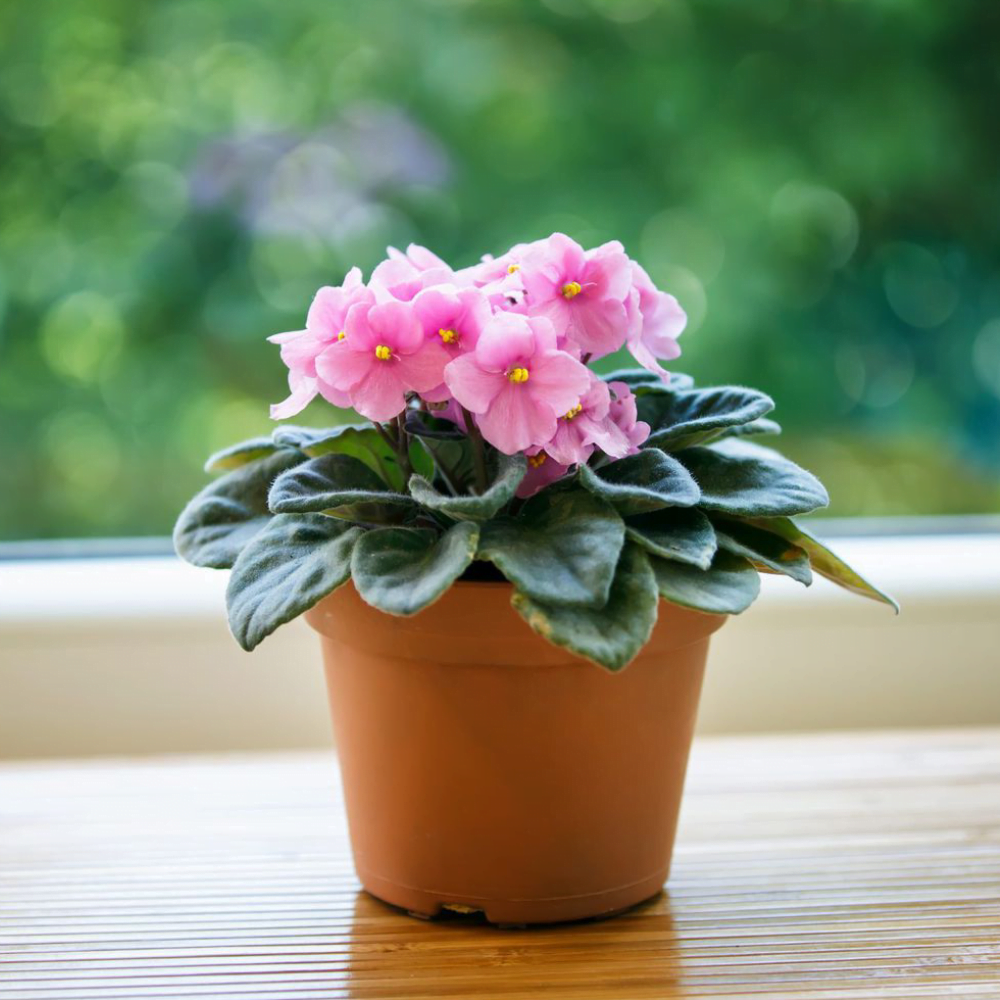
Due to its vibrant blossoms, the African violet is the prom queen of coffee table plants. Put it in a pot that contrasts, and use your imagination. It thrives in direct sunlight that is bright and occasionally gets watered when the soil is dry.
11. Pothos

You can plant different pothos kinds in addition to golden pothos. These plants thrive in low-light environments and only need water when the potting soil is completely dry. Additionally, this natural air filter has numerous positive health effects.
12. Prayer Plant
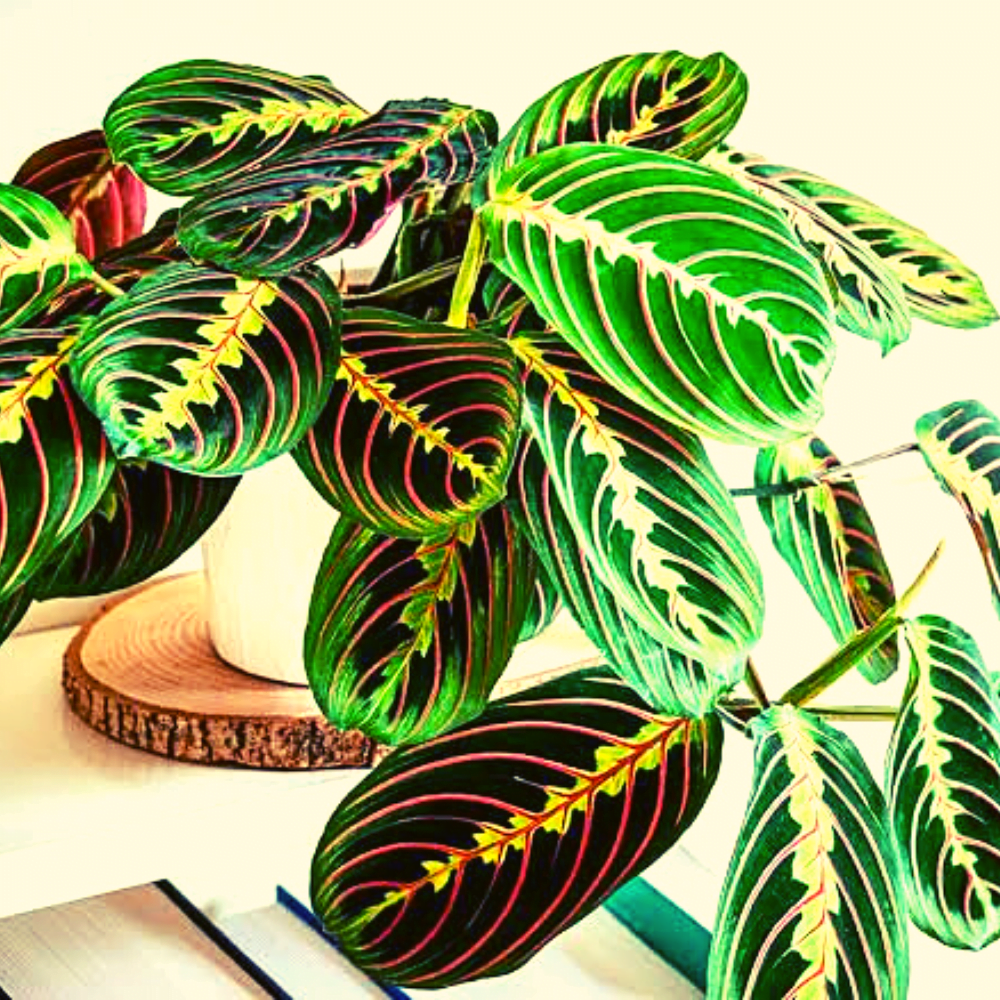
On your coffee table, the Prayer Plant (Maranta leuconeura) adds an original piece of art with its red veins and changing leaves. For it to thrive, it needs even moisture and indirect light.
13. Gerbera Daisy

Gerbera daisy’s vibrant blooms and warm hues can enhance any space. This stunning flower plant also contributed to a NASA study on clean air.
14. Grass
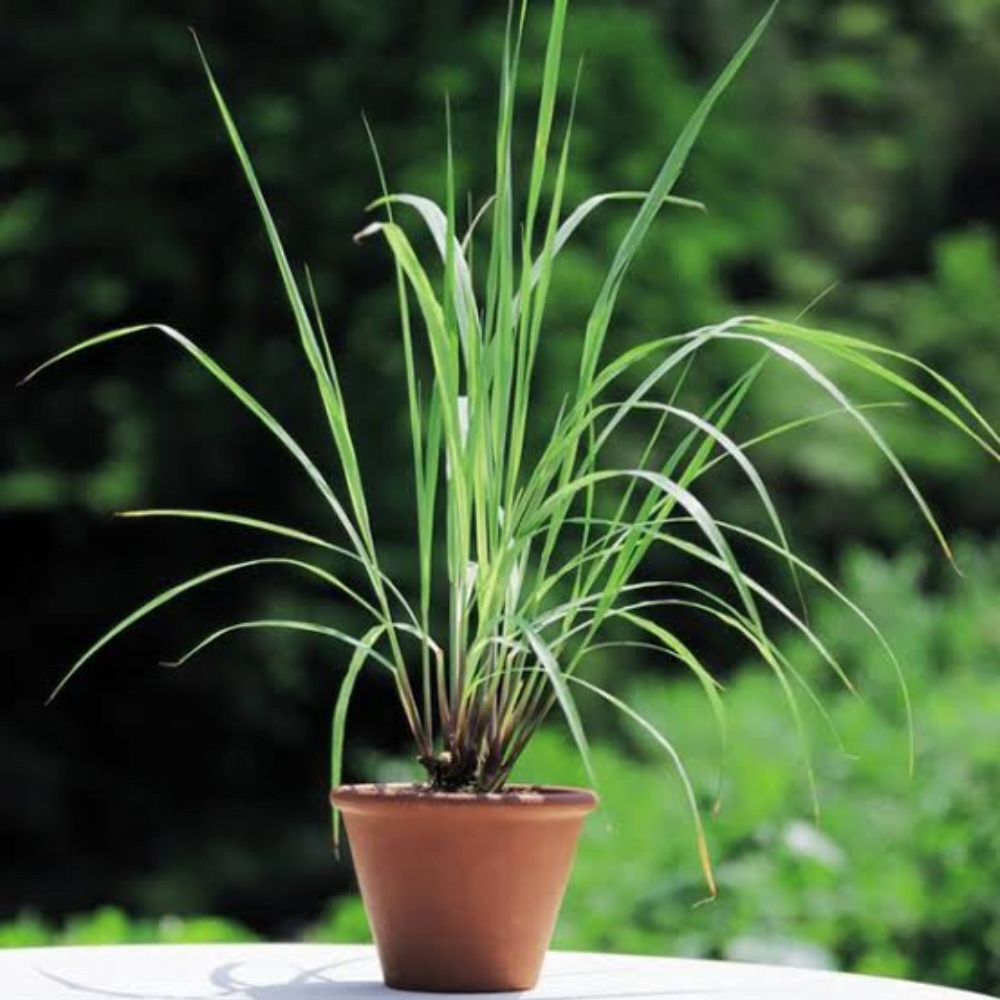
If you enjoy the pleasant scent of new grass in the spring. Consider cultivating it indoors. A modest, shallow pot of grass can make a lovely coffee table centerpiece. The best grass varieties are those that can endure some shade. Wheatgrass and rye are other options.
15. Polka Dot Plant
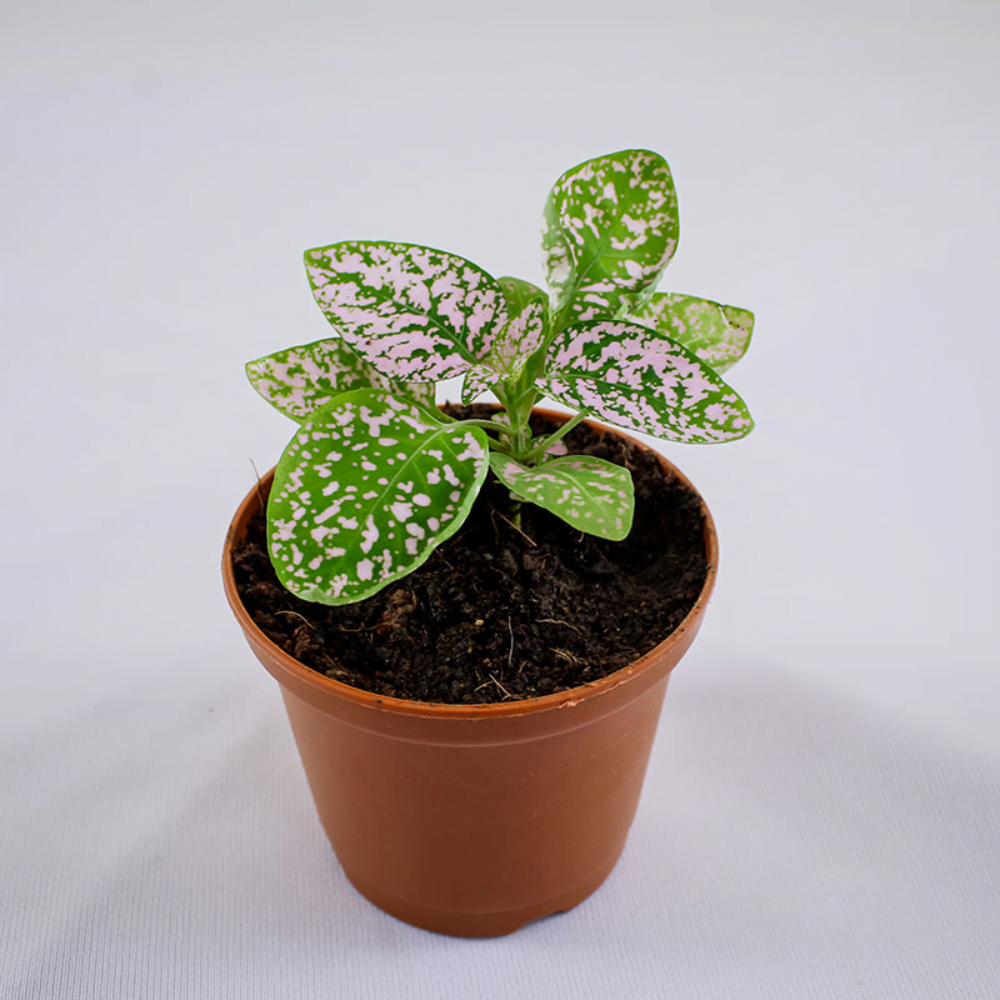
The most beautiful plant on a coffee table is one with appealing white, lavender, scarlet, or pink splotches on its green foliage. It enjoys growing in damp soil with filtered sunlight.
Best indoor plants for coffee table
1. Jade Plant

Adding jade to your home area is one of the popular interior decor trends. Jade indoor plants add a natural and fresh touch to your home.
Jade is a small plant. As a result, it complements any interior design. All of the numerous types of jade plants have lovely green foliage and blossoms, with a tint of pink in the leaves at times. Jade plant flowers are as lovely as cherry blossoms and may bring so much joy into a room with their small flowers.
Since it is succulent, it does not require a lot of water or direct sunshine. Moreover, it is a slow-growing plant, it does not require frequent repotting. This coffee plant can tolerate lengthy years of neglect. It can grow in both direct and indirect light.
Also, Jade has been utilized as a medicinal herb for many centuries in Chinese and African cultures. They have been shown to help with skin warts, diabetes, and general blood circulation. It is still consumed as tea for its stress-relieving properties.
The indoor jade is considered the symbol of fortune and prosperity. Since jade is an evergreen plant, it fosters stability in behavior, according to the ancient Chinese literature of Feng Shui. Also, because it brings wealth and success, the jade plant is an excellent gift for any housewarming party.
2. Succulents
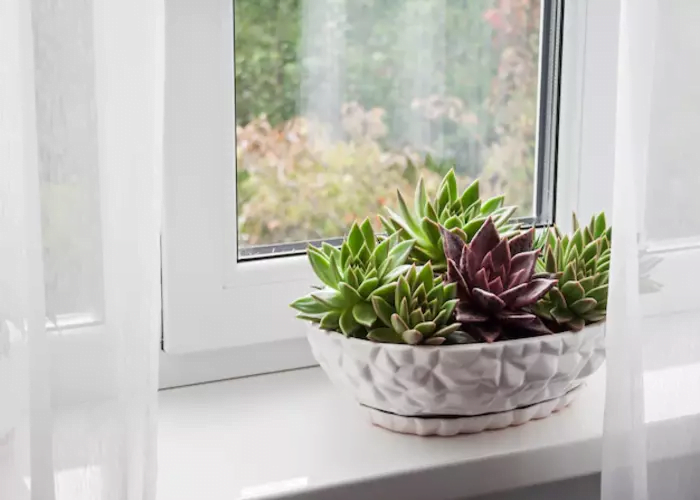
Succulents are currently one of the most popular decoration fads. They not only provide a touch of tropical greenery to your space, but they are also quite sustainable and easy to keep alive.
You can create eco-friendly centrepieces with succulents and bright blossom vases. Besides serving as a centrepiece, this succulent decoration would also serve as a table number.
Start with a huge concrete or silver bowl to achieve this organic impression. Fill the basin halfway with preserved moss to serve as a filler and bed for your lush succulents.
A leafy succulent bush pick will look great atop a handful of enormous artificial echeveria, kalanchoe, and agave flowers.
Among the blooms, place a wooden table number. Finish your gorgeous display with a few bud vases filled with cut dry yellow thistle stems.
3. Cacti

Cacti can be used to refresh your living room decor or as lovely accents to your wedding decor. There are lots of ways to decorate with cacti, thanks to their enormous versatility.
You can display purple-tinged succulent blossoms in a beautiful glass display case to create a shabby-chic look at your wedding reception. This bright, spring-inspired style is simple, gorgeous, and simple to recreate.
- Begin with a wood slab base with bark fringing the edge for this succulent decoration. Use an artificial echeveria blossom as your succulent focal point for an arrangement that will last all day.
- Place the bloom in the centre of the wooden circle, and cover it with a glass cloche to encase the succulent (make sure the diameter of the cloche is less than that of the wooden circle).
4. Air Plants

Air plants, commonly known as Tillandsia, are a popular indoor plant species due to its ease of maintenance and display diversity.
You don’t need to place them in a pot because they don’t need soil to grow. These plants rely on air, sunlight, and water to survive. Isn’t it mind-boggling?
You can use them to decorate any room in your house. Additionally, they are innovative and interesting indoor plants to grow near your coffee table.
5. Blushing Bromeliad

Bromeliads have a variety of flower kinds. Guzmania flower stems are prickly. Vriesea bromeliads have feathery blossom structures. Many Vriesea cultivars feature multicolored foliage. The personalities complement one another. In addition, you receive the strength of two exotic flowers in a single pot.
Another advantage is that both varieties require the same amount of water and light, making them good growth partners.
Bromeliads thrive in damp environments, so try them in the shower. You’ll enjoy their tropical rainforest atmosphere.
During the growing season, feed bromeliads half-strength fertilizer once a month.
6. Snake Plant

There are over 70 different snake plant species. Sansevieria trifasciata is often known as mother-in-tongue law’s because of its long and pointy leaves.
The simplest technique, other than purchasing a snake plant, is to cultivate it by dividing it. This means that the fleshy rhizomes formed by the roots can be removed and transferred to a separate container.
Snake plants are popular as indoor decorations, but they can also survive outdoors. Keep in mind, though, that this is a succulent plant, which means it retains a lot of water within its leaves. So, avoid overwatering your snake plants.
They retain water through their leaves and require only two to three weeks of watering. In the summer, water them more frequently, and in the winter, less frequently.
7. Cape Primrose
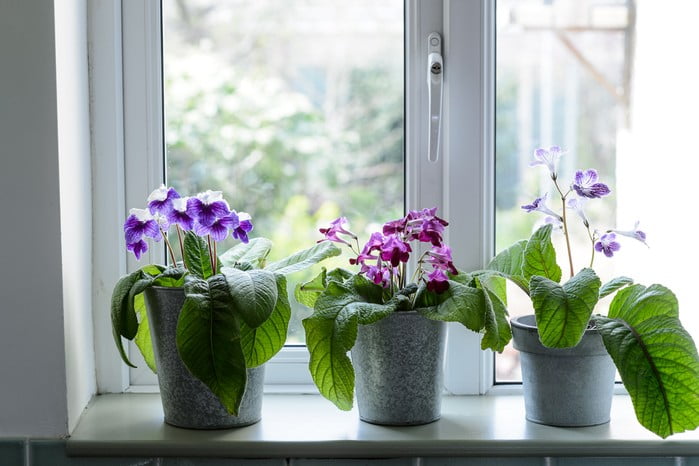
The African violet’s spectacular relative is the Cape Primrose. If you maintain the soil fairly moist and provide it with bright, indirect light all year, you can expect months of blooms.
In order to create some fascinating new kinds with larger flowers and longer blooming times, hundreds of hybrids have been created. There are even dwarf and trailing types.
Cape Primrose is light-sensitive and will not bloom if not given enough light. So, locate your plant near a bright window where it will receive several hours of curtain-filtered sunlight.
Additionally, this plant thrives under fluorescent lighting as well. Under a reflector, put one warm white tube and one cold white tube. Keep flowers under the light for 15 hours a day.
Long, twisted seed pods might appear after the flowers. To avoid wasting energy on seed development, remove dead flowers as soon as you detect them. After the last bloom has faded, cut the flower stems back.
8. Boston fern
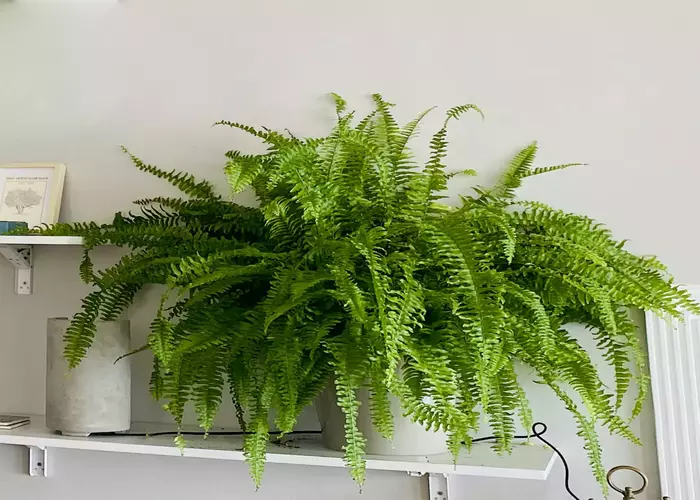
It is not difficult to care for a Boston fern, but it is particular. Here is some Boston fern care ideas to help you supply everything your fern needs to be happy and gorgeous.
To begin, you must provide proper Boston fern care to ensure that it is in the proper habitat. Indoor Boston ferns require a chilly, humid environment with indirect light.
It’s a good idea to give more humidity for Boston fern plants indoors throughout the winter. Most rooms are relatively dry, and this is exacerbated when heaters are turned on.
To increase humidity, set your Boston fern’s pot on a tray of pebbles filled with water. You can also lightly moisten your fern once or twice a week to help it retain humidity.
9. Grape Hyacinth

Grape hyacinths are small in size, but they make up for it in beauty and ease of maintenance. Plant grape hyacinths in the fall, forget about them for months, then watch them bloom in early spring.
This coffee table plant thrives in full sun but may also tolerate moderate shade. It’s important to remember that many shady spots in the summer are actually quite sunny in the spring.
In terms of soil, they need slightly sandy soil, although they thrive in all but the soggiest mixtures. Furthermore, grape hyacinth is unconcerned about the pH of the soil.
They prefer a moderate quantity of moisture in the spring, but their soil should be let to dry out slightly as the season develops.
Furthermore, they thrive in any environment within their USDA hardiness zone range. They do, however, require a mild winter period to bloom. Therefore extremely warm winter temperatures may result in bloom failure the following spring.
10. African violet
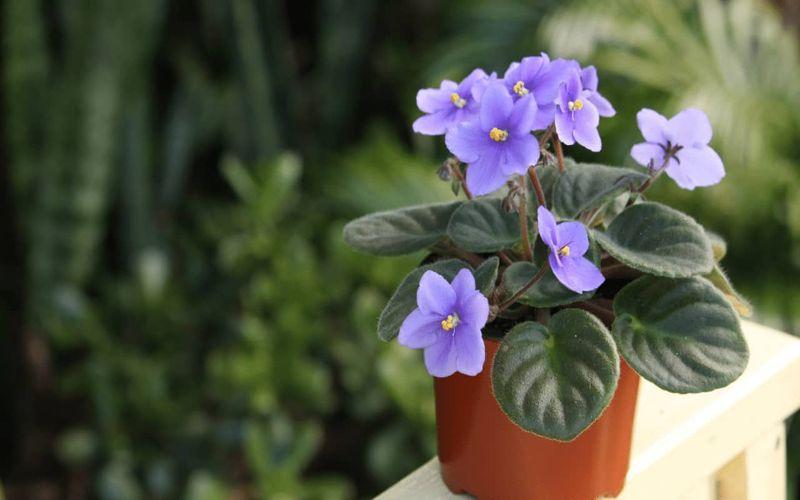
The African Violet is well-known for the variety of colors in which it blooms, ranging from violet to blue, white, and even pink. It is a tough plant that thrives inside.
Because of this, it is ideal as a decoration for your coffee table, kitchen table, windowsill workstation, or bedside drawer. This is why it is referred to as the Queen of Indoor Plants.
African violets thrive in bright, indirect sunshine. They are typically cultivated with fluorescent lights 12 to 15 inches above the leaves.
Maintain soil moisture with warm water and aim for high humidity. Other than gentle misting, do not allow water to contact the plant’s leaves to prevent damage.
11. Pothos

Pothos vines do not cling to trellises and support on their own (like ivy does), but they can be trained to look like they are twinning.
They like sun or shade, but they should not be exposed to too much of either. Indoors, Pothos grows best in bright indirect light.
Ideally, Pothos grows in soil with a pH between 6.1 and 6.8. But it can grow in a variety of environments.
Keep them at a constant temperature above 50 degrees Fahrenheit, even though they prefer a room temperature between 65 and 75 degrees Fahrenheit.
12. Prayer Plant

Prayer plants are low-growing coffee table plants. They are spreading plants that thrive under greenhouse-like circumstances, such as warm, moist airflow and plenty of fertilizer. However, poorly drained soil might cause root rot or collapse of the plant.
You can hang or place your prayer plant on your table that receives indirect sunlight. You shouldn’t place your plant in direct sunlight because scorching leaves can cause blotches and spots.
The soil should have an acidic pH of 6.0. And make sure your prayer plant gets enough water during the growing season.
13. Gerbera Daisy
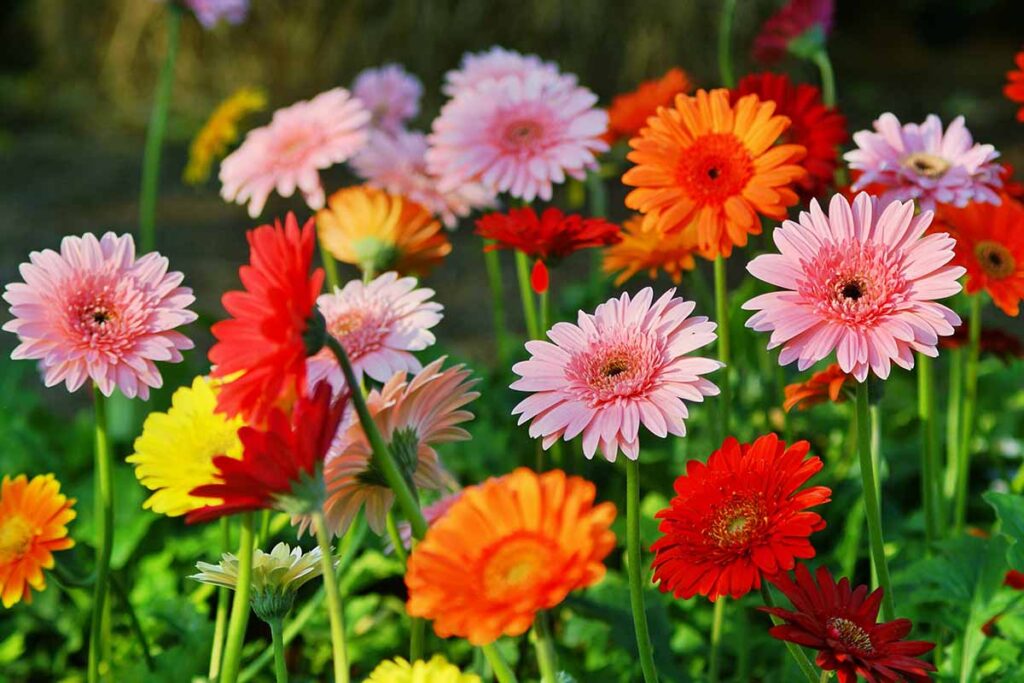
Gerbera daisies, often called Transvaal daisies or gerbers. They are eye-catching plants with beautiful, long-lasting blooms, short stems, and striking, vivid green leaves.
Gerbera daisies are reasonably easy to grow outside, however, indoor gerbera daisy cultivation can be challenging.
Your gerbera daisy could live for two or three years, nevertheless, if you can supply it with the best conditions for growth.
Harsh early sunshine is frequently beneficial, but make sure the plant is shielded from bright afternoon sunlight.
Gerbera daisies can handle chilly temperatures, but they can’t endure temperatures above 70 degrees F for very long (21 C.).
When the top inch (2.5 cm) of soil seems dry to the touch, deeply water the plant. In moist soil, the plant is likely to rot, so drain the pot completely before returning it to the saucer. Try to keep the leaves as dry as possible.
14. Grass
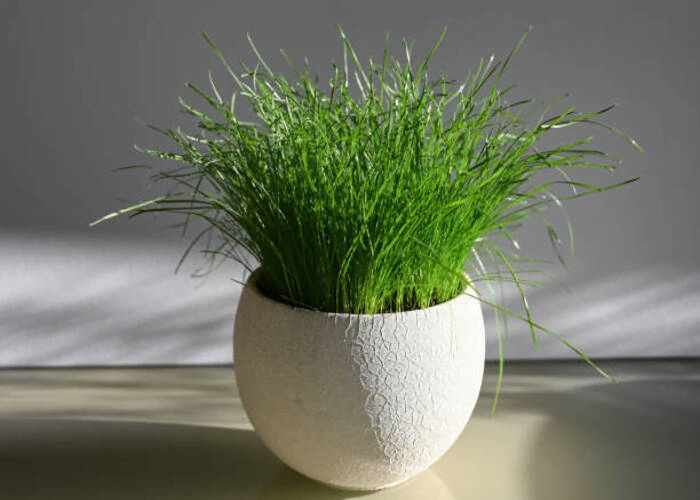
Grasses aren’t typically the first thing that comes to mind when thinking of adding living vegetation to your indoor settings. However, they make the best coffee table plants.
The majority of indoor grass species require a lot of light and thrive best when placed in an area with lots of natural light.
Indoor grass thrives in shallow, well-draining containers. Although grass enjoys moist soil, standing water can stunt growth and cause root rot. Hence, it’s crucial that water can hydrate the grass and then move right through it.
15. Polka Dot Plant

Your Hypoestes, sometimes called the pink polka-dot plant, is a character with killer looks! Particularly when compared to other plants, its vividly speckled leaves stand out in the throng.
For polka dot maintenance, bright, indirect light is great because it will preserve the colors’ vibrancy! If there is too much light, the color will fade; if there is not enough, it will completely disappear.
Ideal temperatures range from 18 to 20 C. The soil should be consistently damp but not drenched for the polka dot plant. You may get the most out of your Hypoestes by spraying it occasionally because it also prefers a moderate amount of humidity.
Conclusion
You’ll be sure to add a touch of elegance to your table with these cute coffee table plants. You can use decorative ceramic pots to complement these amazing coffee table plants.
Each of these plants would make a great centerpiece for a coffee table. Nevertheless, if you tend to forget to water plants, your best bet will be jade plants, cacti, or other succulents.
If you want to add color to your coffee table, African violet, polka dot, gerbera daisy, and praying plants are sure to do the trick.
When it comes to keeping away from soil dirt, air plants are your best option. So, add these indoor amazing centerpieces to your coffee table today and make it the center of attention.
What is your favorite coffee plant? Let me know in the comment section.
Related Articles
- 15 Best Plants for Front Door Entrance India | Auspicious plants for front door
- 10+ Money plant Benefits That Will Make you Keep It In Your House
- Are Spider Plants Toxic to Cats?- 4 Ways To Prevent Your Cats From Eating Spider Plants.
- Best Plants for the House – 8 Top Apartment Plants That You Can’t Miss
- How to Braid Your Snake Plant: Tips and Care Guide
- 20+ Rare and Unusual Peace Lily Varieties You’ll Love





